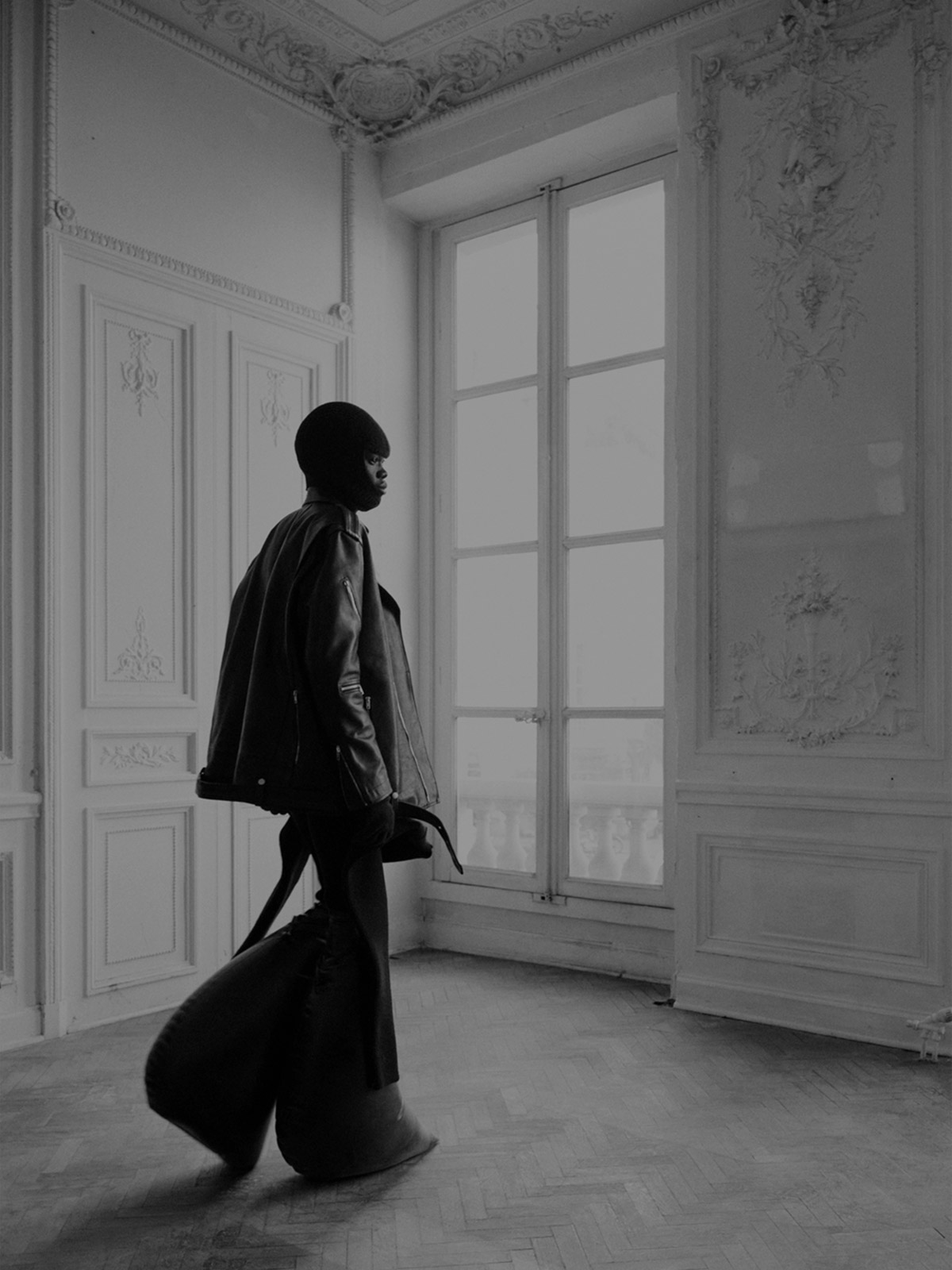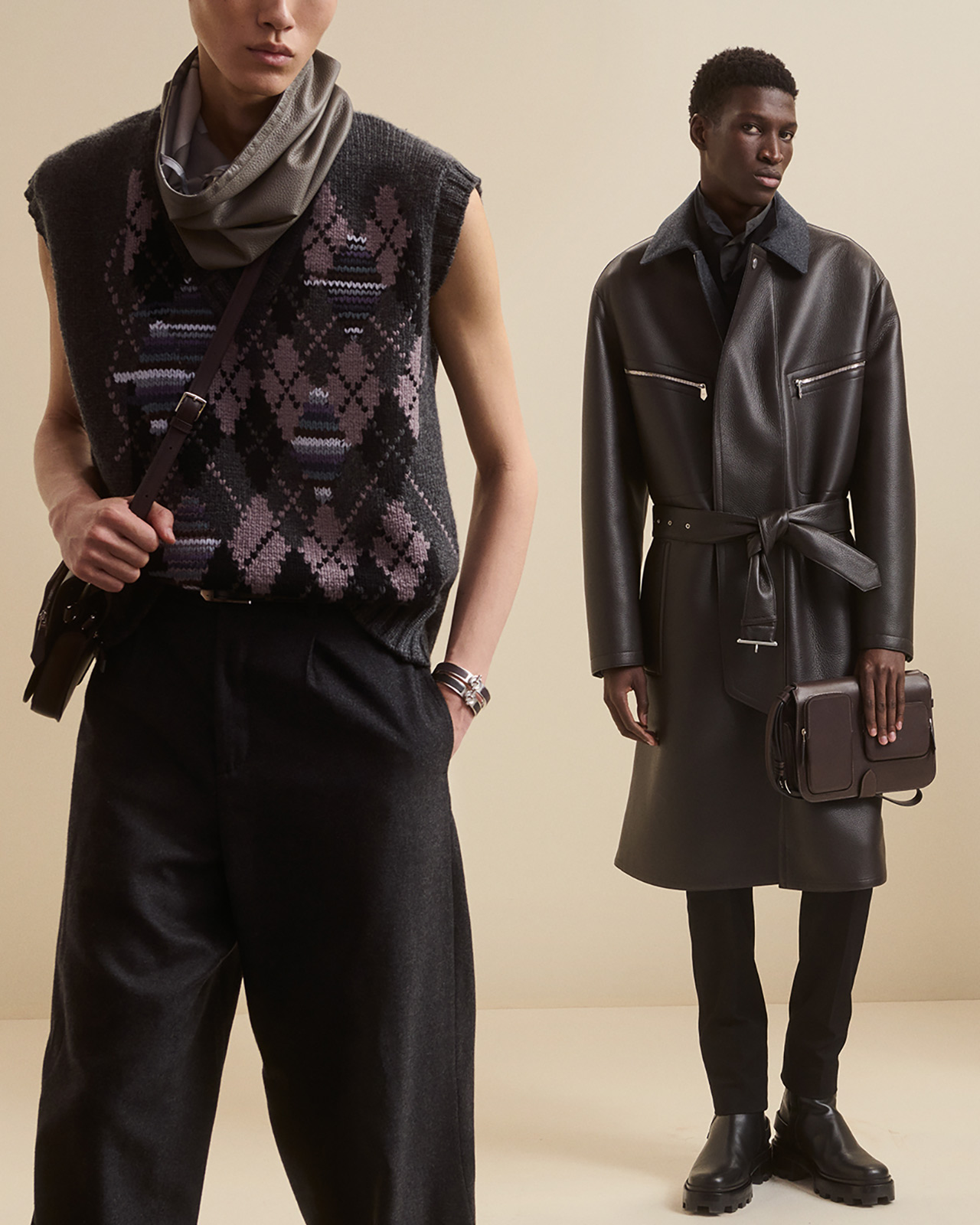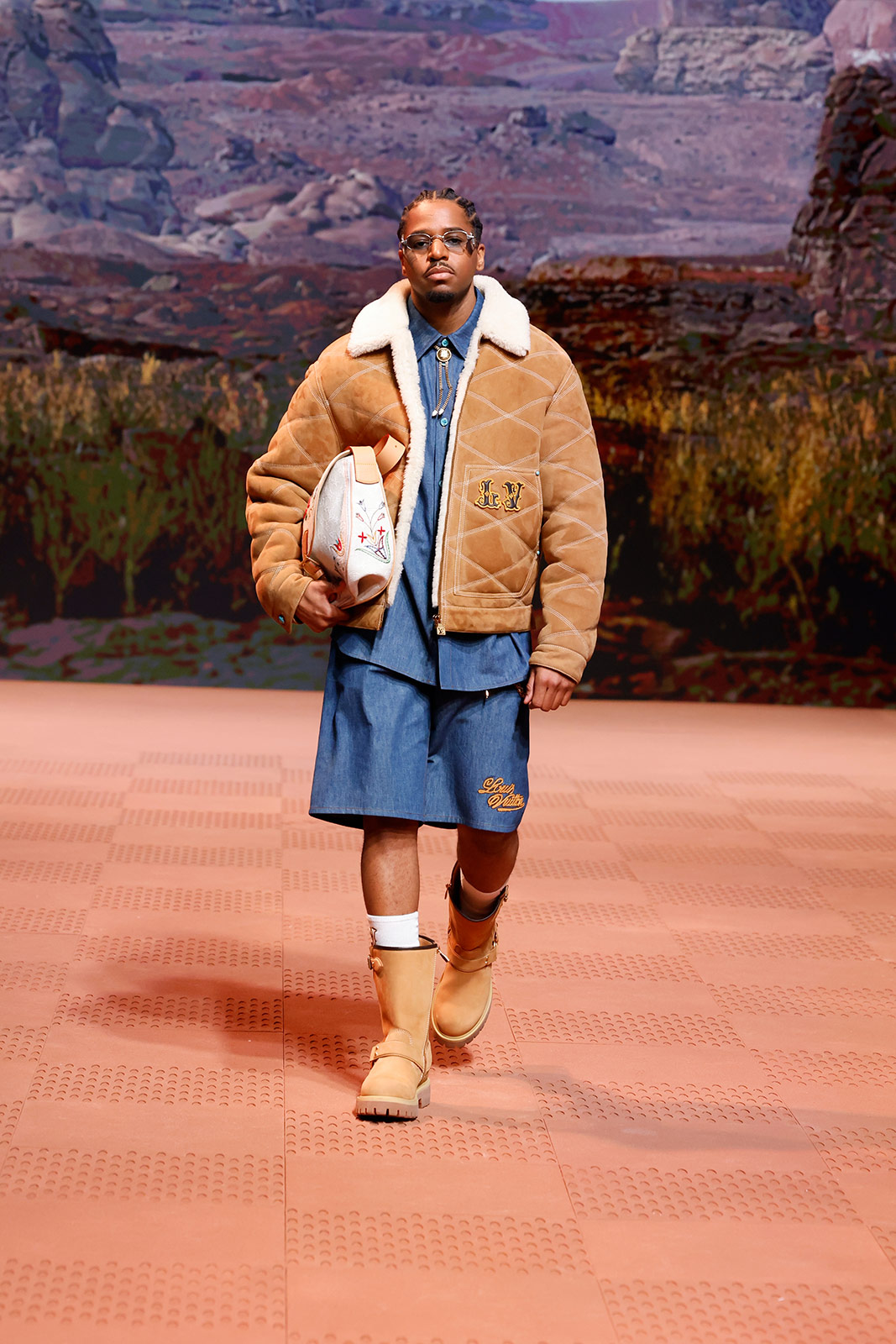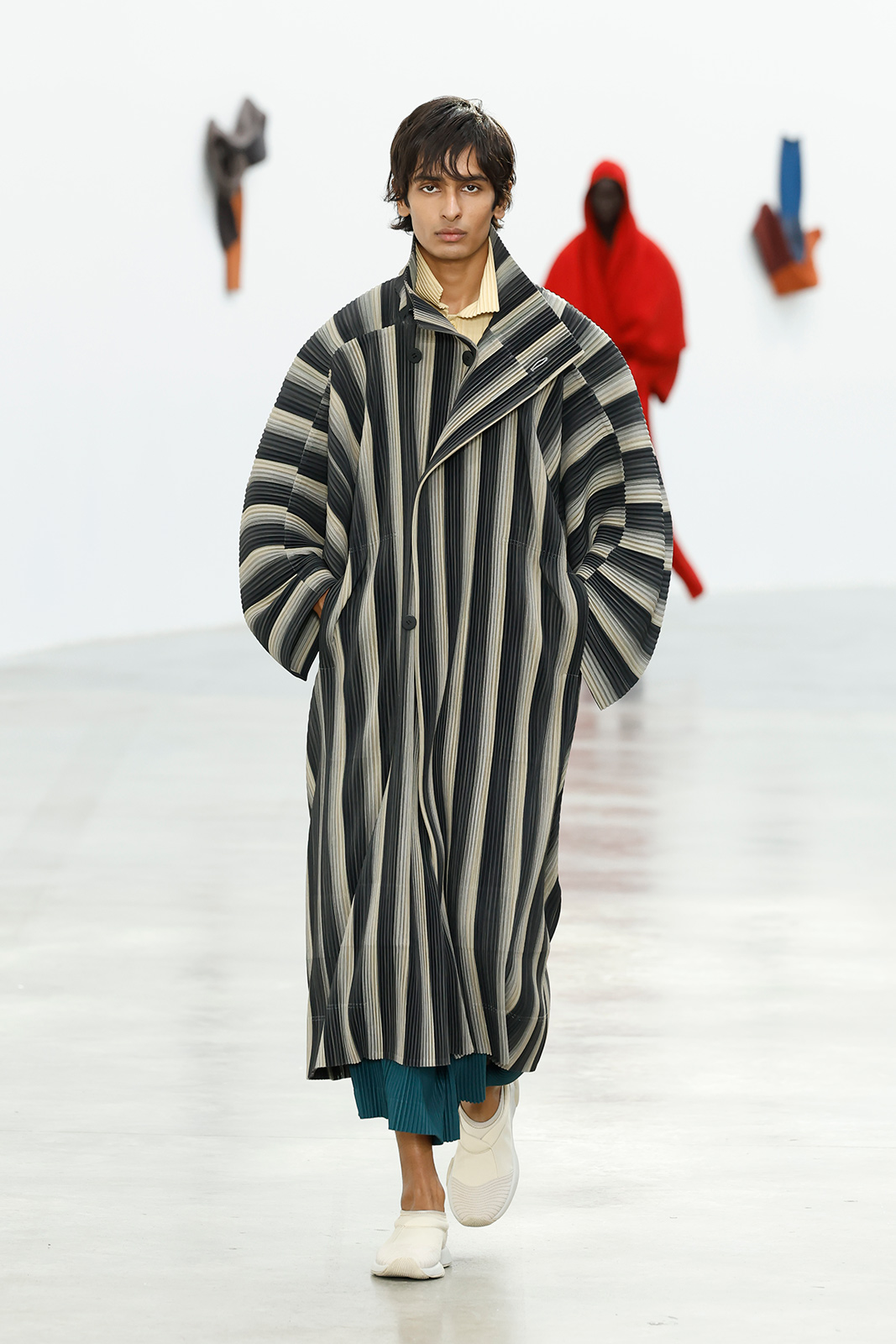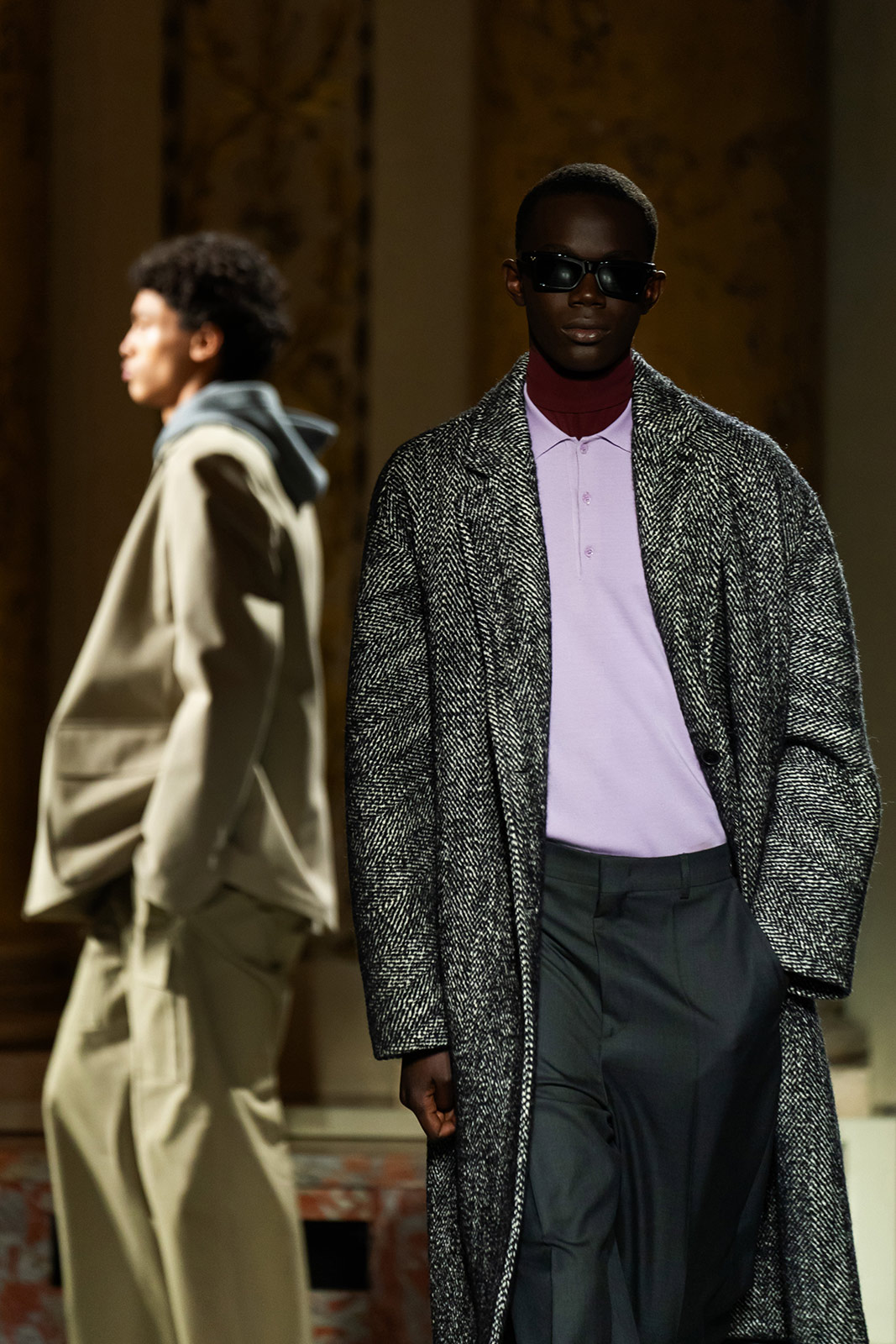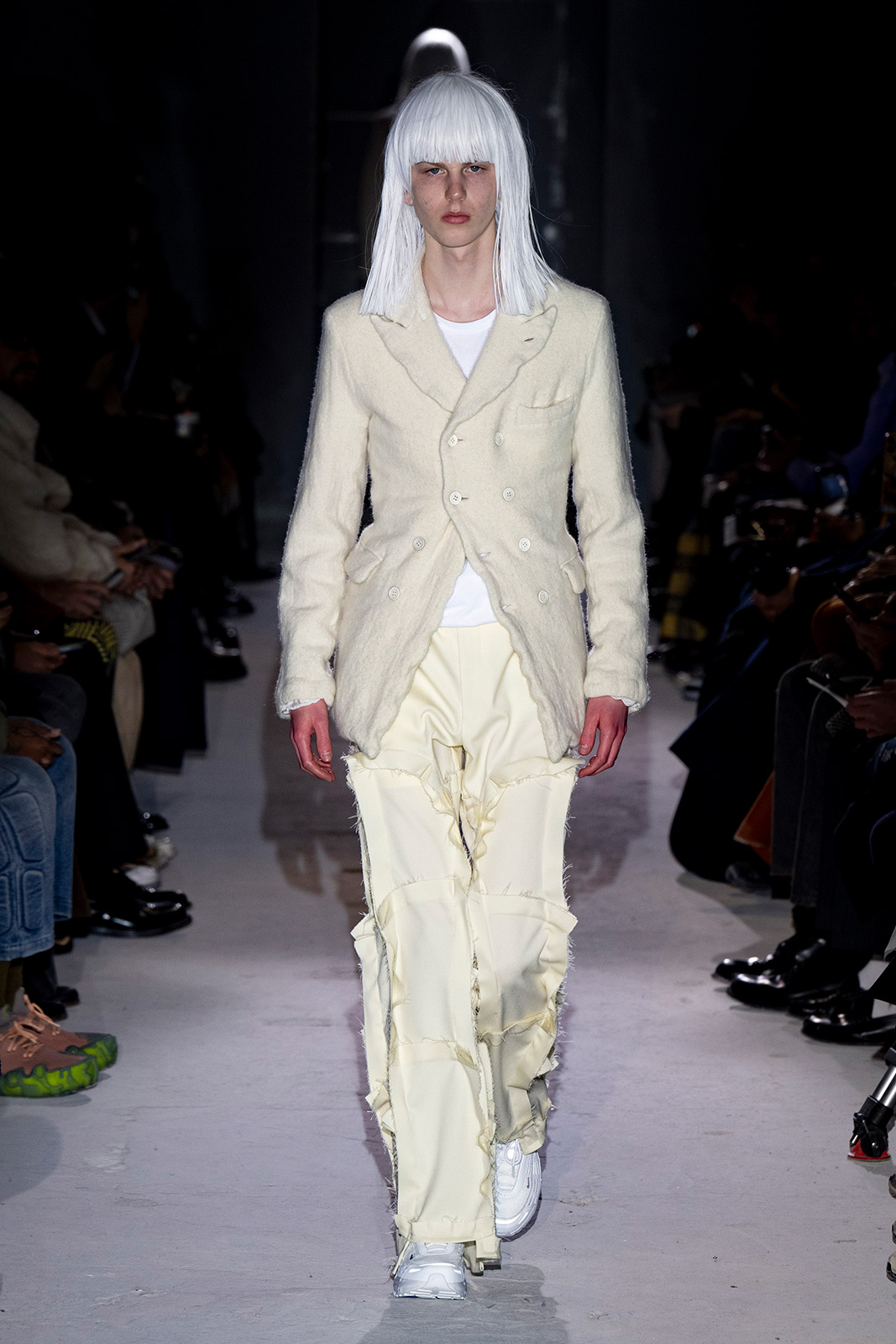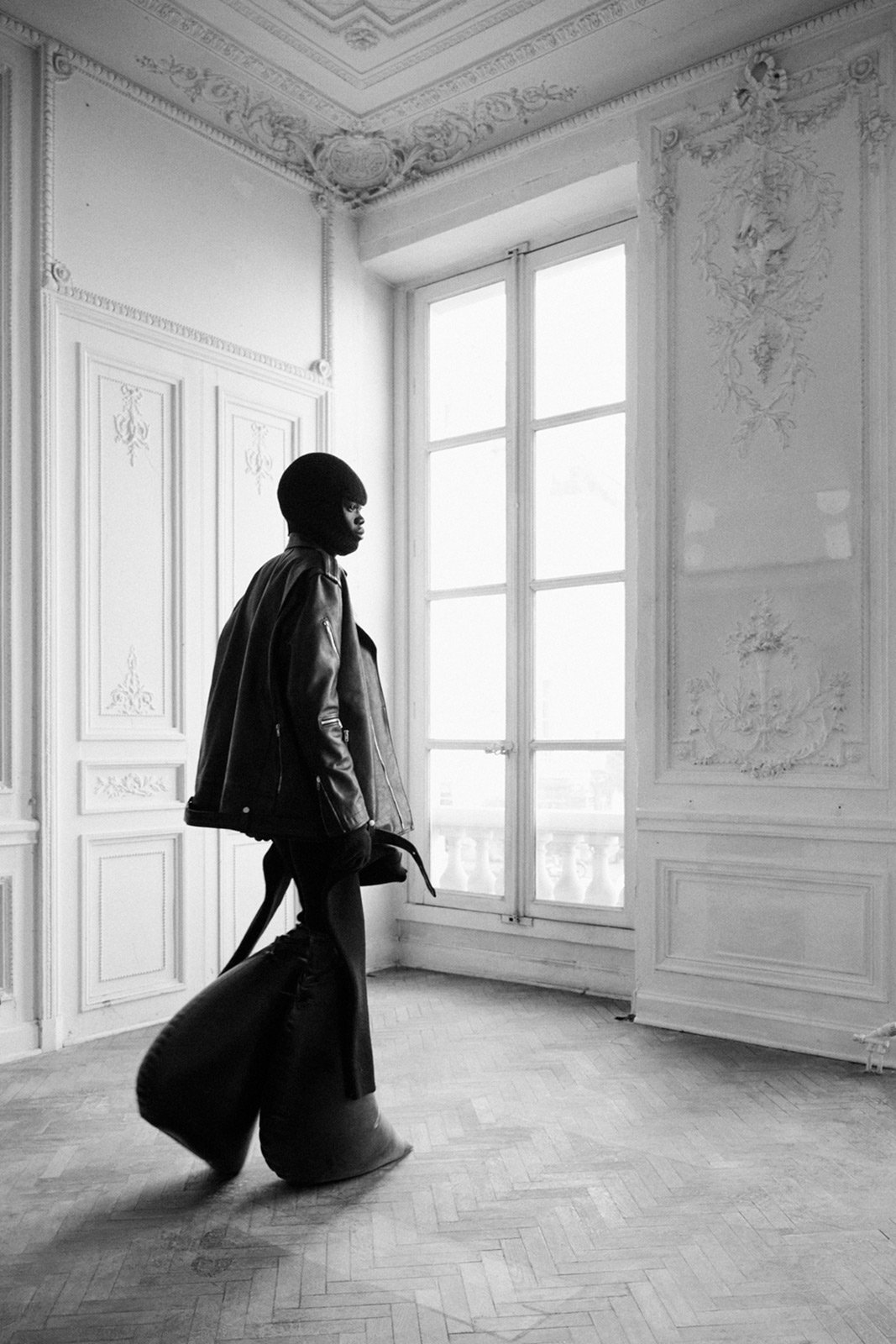Document Journal rounds up the week’s standout menswear collections from the French fashion capital
Paris is known simultaneously as a global center of modern intellectualism and la mode. The second week of Fall/Winter 2024’s menswear season in the French fashion capital exemplified both aspects of this reputation with labels showing equal parts smarts and sparkle on the runway. Wildcard Louis Vuitton creative director Pharrell Williams recontextualized American workwear history with literal and imaginative motifs, showcasing western ranch-hand uniforms bedecked in the house’s signature monogram. Designers Kim Jones, Jonathan Anderson, and Pierpaolo Piccioli proposed menswear futures on their runways: classical ballet met antique-style kimonos; simple looks became plaid-and-tracksuit-pants-wearing characters; and masculinity was reinvented with men’s suits cut like women’s haute couture gowns. The main takeaway is that thinking is in.
After touching down in Paris last week, Document Journal shares its roundup of the best and brightest Men’s Fashion Week shows from the heart of the French fashion capital.
Dior Homme
This season, creative director Kim Jones mines his own family history via his uncle Colin Jones—a photographer and ballet dancer—who shared a friendship with the late Rudolf Nureyev. The result is a collection that lends theatricality to everyday menswear, as stated in a press release. From Monsieur Dior’s relationship with Nureyev’s dance partner Margot Fonteyn, Jones’s collection—aptly titled Nureyev—focuses on contrast: between the French label’s house codes in ready-to-wear and haute couture, and between the “onstage and the backstage,” says Jones himself. Formality pliés in silk-polyester mary-jane sneakers and pirouettes in ballet-inspired flats imagined with a bulkier, masculine twist, each styled with a calf-length sock. Soft wool-melange tailored pieces, boxy leggy jumpsuits, and sumptuous leathers are seen alongside antique-feeling textiles inspired by Nureyev’s many kimonos. As to be expected from the house, accessories stun: oversized leather camera and bum bags complement velvet hats (an original from Stephen Jones for Dior womenswear in 1999) and twisted silk-jersey dancer’s turbans. The life of Nureyev seamlessly blends with Dior’s tradition of excellence, merging the dancer’s iconic flamboyance and the label’s legacy of Parisian chicness.
Loewe
All the world’s a stage according to Shakespeare, but to creative director Jonathan Anderson, it’s all a big collage. Based on the singularity that comes from a high-speed image consumption “so straightforward it becomes blatant,” according to the press release, this season’s Loewe explores the effect of our contemporary social media landscape on fashion, via a menagerie of “desirable characters.” Anderson’s characteristically playful construction techniques are but one element fortifying this theme: thick black belts with silver buckles dangled in the same position on right belt loops as if sewn into the pants as an accessory (this was the case), and thick jersey hoodies are rendered down to their kangaroo pockets worn like cummerbunds. Anderson angles his position at Loewe to wink at the “disparate” image fashion he’s so critical of, by creating his own collection as a luxury solution: knit tights made to look like ’70s knee-high sport socks, the brand’s own clown shoe-esque take on Vans, and added collage artwork by Richard Hawkins (either fully beaded on trousers and zip-up hoodies, or knit into magenta cardigans) are but a few examples of this. There is no more a “single look” for men, but instead a sea of interesting layers, much like the constant flow of images we look at every day.
Hermès
It goes without saying that Hermès knows how to do leather—but the house just so happens to excel at everything else, too. Described as “dandy chic” in the press release, Véronique Nichanian’s collection features preppy argyle sweater vests, reflective quarter-zips, and shimmery evening shirts, layered with cashmere beanies and soft-looking snoods for a sharp man-about-town fantasy. Wool, tweed, and leather outerwear occasionally sport an asymmetrical collar or oversized hardware, details that feel intentionally cheeky when styled over top taper-legged suiting or patterned knitwear. It wouldn’t be a proper season at Hermès without a bespoke bag—or two. This season equine-themed canvas bags and the oh-so-coveted Haut à Courroies in gault-ish shades of the finest calfskin stole the show. Nichanian’s distinctly Hermès take on the proper chap provides fresh looks for the modern man.
Louis Vuitton
Pharrell Williams’s second show as creative director of Louis Vuitton demonstrates that he’s got a fascination for cowboys and cowhide. The runway show featured a tasteful Spaghetti Western-esque backdrop and models adorned in fringe and turquoise—a description that, without proper context, might seem like a nightmarish scene at a Santa Fe tourist trap, but in this instance, is nothing short of brilliant. The music-turned-fashion-mastermind employs these motifs in tassel-trimmed wool coats and bright blue monogrammed Speedy bags, a pocketbook silhouette he’s re-popularized from Vuitton’s tremendous catalog. Perhaps the most compelling element was that of traditional men’s workwear positioned next to the more direct ranch hand looks: we’ve got models in canvas LV-emblazoned jackets pushing giant reflective trunks on dollies like chic UPS guys, or dressed in equally logo-maniacal denim suit separates with bandanas and 10-gallon hats. It’s as if present-day workwear originated from Pharrell’s Louis Vuitton cowboy dreamscape, when there were as many tumbleweeds as there are now Neverfull totes.
Issey Miyake Homme Plissé
The Issey Miyake team returns this season with a collection of the house’s signature pleats reimagined in collaboration with artist Ronan Bouroullec. Based on Bouroullec’s larger body of work, the runway show featured Homme Plissé’s classic separates adorned with delicate multicolored brush strokes on the shoulders of boxy t-shirts and the trunks of longer tunics. The catwalk saw unexpected permutations of the usual Issey silhouettes, with longer tank top vests with dropped arm openings, which models tucked their arms into like makeshift pockets. Another standout is the Stylo-Bille cushion coat—named after a Bourollec drawing done with a ballpoint pen—a piece of outerwear featuring a patch-style pocket that the garment can be folded into to create a comfy pillow. Whimsically artistic and wonderfully inspired, the overall collection serves as a reminder that fashion is a wearable art.
Valentino
“Man, as human,” Pierpaolo Piccioli declares in the show notes for La Ciel, his latest collection for Valentino. Piccioli seeks to do more than merely make clothes; he aims to unpack the very concept of man that informs the menswear canon. This season, Valentino showcases a gentle approach toward masculinity in its many variations: traditional suiting is tailored softly with rounder shapes in the waistcoats, coats are lined in chiffon, and pocket t-shirts are billowing as if cut on the bias. Heritage techniques from women’s haute couture unify the collection—not creating a “womanly” shape, but adding context to the straight, boxy silhouettes in typical menswear grays and blacks. La Ciel, translates to “the sky” in English, begging the question: is there a sort of glass ceiling in men’s fashion, or is the sky the limit?
Comme des Garçons Homme Plus
Ready-to-wear becomes a contact sport in Rei Kawakubo’s Men’s Fall/Winter 2024 collection for Comme des Garçons Homme Plus. The show notes read “SPIRITUAL WORLD. White is symbolic of prayer”—and the runway offers just that, in the form of an ethereal selection in standout textures that beg to be touched. Classic Comme silhouettes like balloon pants and shrunken blazers are seen this season in a palette of bone, ecru, cream and stark white, as well as a breadth of textiles geared toward the tactile: caged knits, frilly bloomers, and fuzzy wools, to name a few. Kawakubo once famously said, “I work in three shades of black.” This season, the notoriously private, globally celebrated designer chooses to work in three shades of white—using black as a contrast, rather than the star—in this contemplative collection.
Rick Owens
Rick Owens honors this menswear season with a sort of anti-tribute to his hometown of Porterville, California, turning what the show notes call “the small brutalities of a sensitive childhood in a judgemental community” into a defiant runaway presentation about the barbarism of humanity. The designer’s signature textile-driven approach results in cashmere and alpaca knit space suits, shaggy silk jumpsuits, and 13-ounce Japanese denim, which has been wax-treated and foiled to create a cracked and molten appearance. Rendered in epic, rotund proportions, this season was one of collaboration for the American designer. Owens worked with Matisse Di Maggio, a Parisian BDSM rubber specialist, on garments made from recycled bicycle tires. The “exquisitely cheerful depravity” of provocateurs Steven Raj Bhaskaran and Hannah Rose Dalton of Fecal Matter, was also cited as source material for his runway concept. The show-stopping pull-on stretch boots are made in collaboration with Straytukay, a technically gifted London designer who specializes in volume. Tension swells like kinky rubber balloons this season at Rick Owens; that kind of pressure is what has got him to Paris for fashion week.
Sacai
Creative director Chitose Abe mines the idea of a uniform for a larger theme of togetherness in this season’s Sacai. The collection plays a little semantic game by presenting the uni-form, a clothing concept based on the idea of “one love,” as written in the show notes. Sacai’s usual voluminous tailoring is scaled up in bubbly coat sleeves, trench coat hems, and jewel-tone velvet puffers layered over matching tunics. Known for her genre-bending tendencies merging East and West, Abe’s hybridized outerwear reaches new heights, combining her Tokyo-grown sensibilities with the vision of American skateboarding legend Mark Gonzales, whose unique embroidered patches adorn dark cargo-pocketed jackets. With coats that turn into dresses, printed tops that flow like dusters, and vests that look as though they can zip into parachutes, Sacai’s uni-formity isn’t found in sameness but in the ways many looks collectivize toward a singular goal: unity.


